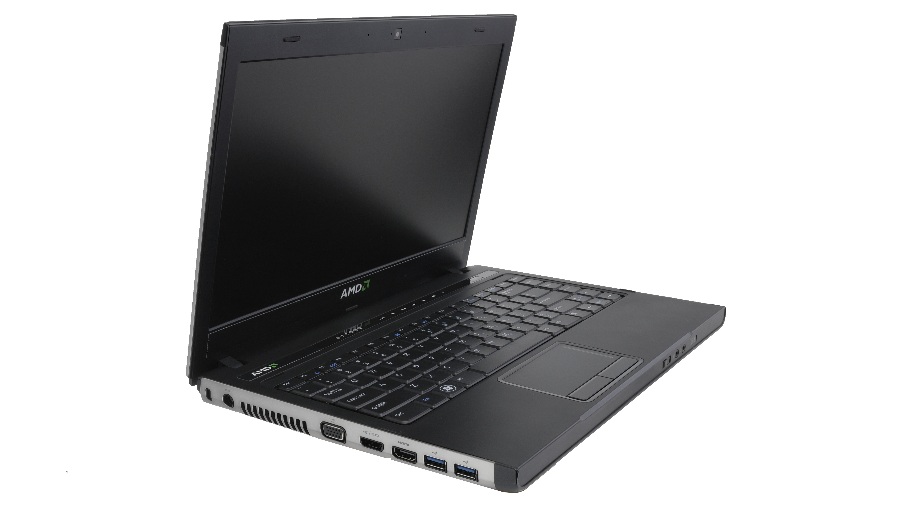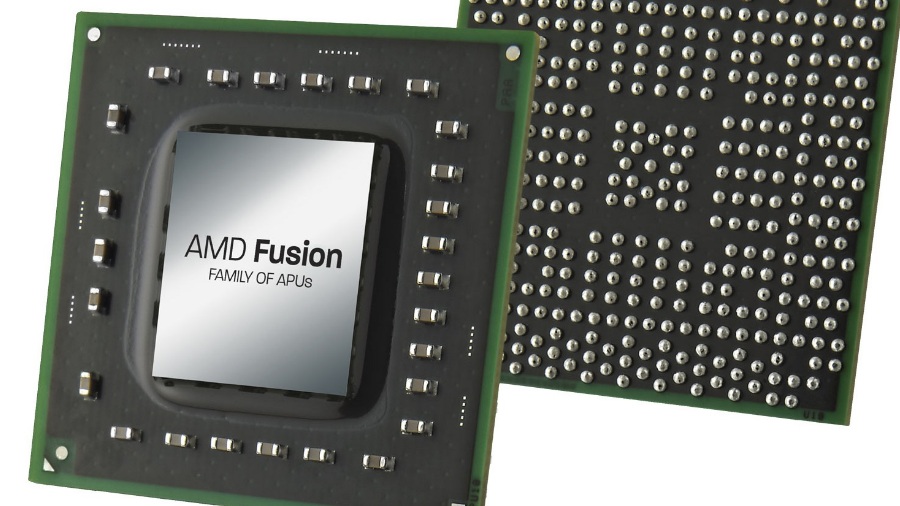Why you can trust TechRadar
Like most mobile processors, the new AMD A10-4600M isn't a chip you're likely to buy separately. Instead, it will come as part of a portable PC of some kind. Inevitably, therefore, the specifics of the AMD A10-4600M are somewhat blurred by the platform into which it's inserted.
The first laptops with the AMD A10-4600M aren't quite ready for retail consumption, so AMD provided us with a whitebook system that's used for evaluating the underlying platform. It's a pretty conventional and dowdy looking thing, but the aesthetics aren't important.

For context, however, the specifications do matter. It's a 14-inch system with a TN panel and 1,366 x 768 pixel native resolution. AMD has fitted a Samsung 830 Series SSD and 8GB of RAM, so there should be little to nothing holding the AMD A10-4600M chip back. It's a solid platform for mobile computing.
As for the AMD A10-4600M itself, it's nominally a 2.3GHz chip manufactured using the same 32nm production process as both Llano chips (like the AMD A8-3500M more powerful Bulldozer-class desktop processors including the AMD FX-8150).
But that doesn't tell you all that much in the context of what is a pretty novel architecture inside the AMD A10-4600M. Take the CPU cores. They're the first examples of AMD's new Piledriver architecture.
A revision of the intriguing but disappointing Bulldozer design, AMD hasn't been hugely forthcoming regarding the changes. But the basics remain pretty similar and involve two Bulldozer-style CPU modules and therefore four of those tricksy modular cores.
As we know, a single Bulldozer core is no match for even AMD's old Phenom cores much less Intel's immensely powerful Sandy Bridge and, soon, Ivy Bridge cores. So it will be awfully interesting to see how Trinity compares on CPU power with its direct predecessor the AMD A8-3500M, a chip that sports four pukka CPU cores, as well as Intel's dual-core chips for Ultrabooks.
Sign up for breaking news, reviews, opinion, top tech deals, and more.
But what about the graphics half of the AMD A10-4600M equation? AMD is calling the integrated 3D core the Radeon HD 7660G. Inevitably, perhaps, things aren't quite what they seem. This isn't a bona fide HD 7000 series design based on latest AMD's Graphics Core Next architecture, as found in desktop graphics cards like the AMD Radeon HD 7970.
Instead it's based on what's known as the VLIW4 shader design, something that lived relatively briefly in the Radeon HD 6000 series of graphics cards. This is where things get complicated, because the AMD A8-3500M, which claimed to have HD 6000 graphics but really had HD 5000 vintage hardware, has 400 graphics shaders, whereas the AMD A10-4600M has just 384 of those VLIW4 shaders.
Since the two architectures are not directly comparable, don't assume that makes the new chip less powerful. If nothing else, the AMD A10-4600M's graphics core runs around 200MHx faster at 685MHz.
As an overall proposition, then, the AMD A10-4600M combines AMD's latest CPU design with its most advanced integrated graphics ever in a package that might just offer one of the most compelling compromises between power consumption, price and performance.
Technology and cars. Increasingly the twain shall meet. Which is handy, because Jeremy (Twitter) is addicted to both. Long-time tech journalist, former editor of iCar magazine and incumbent car guru for T3 magazine, Jeremy reckons in-car technology is about to go thermonuclear. No, not exploding cars. That would be silly. And dangerous. But rather an explosive period of unprecedented innovation. Enjoy the ride.
